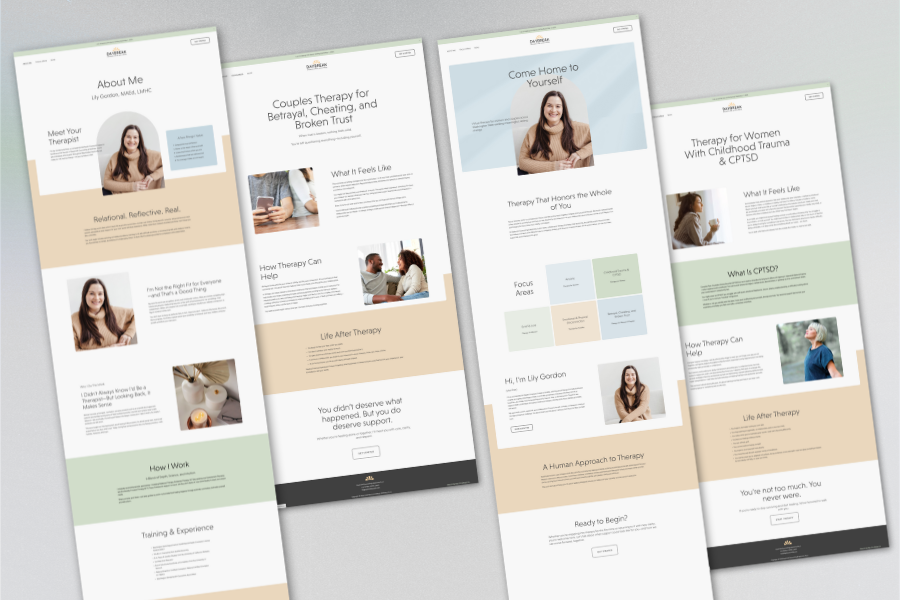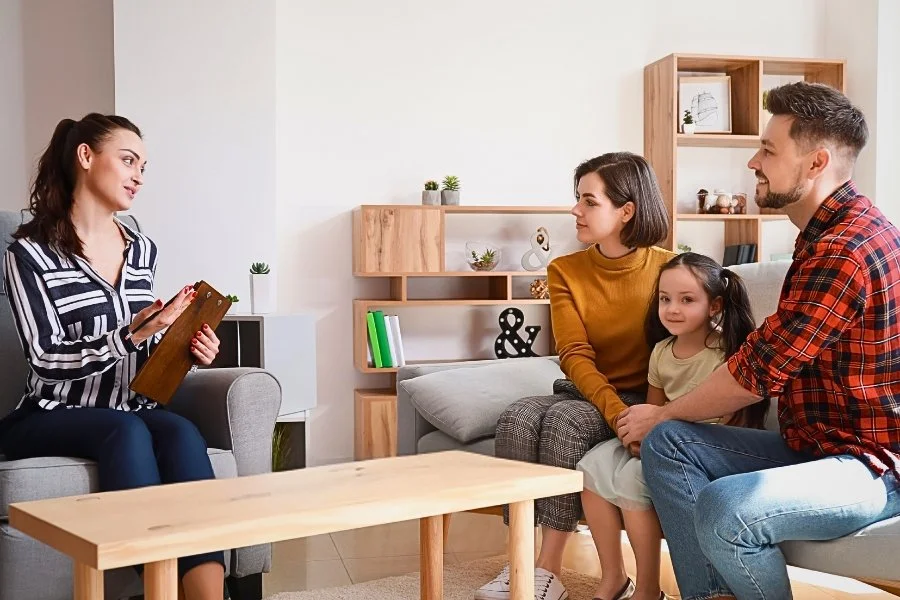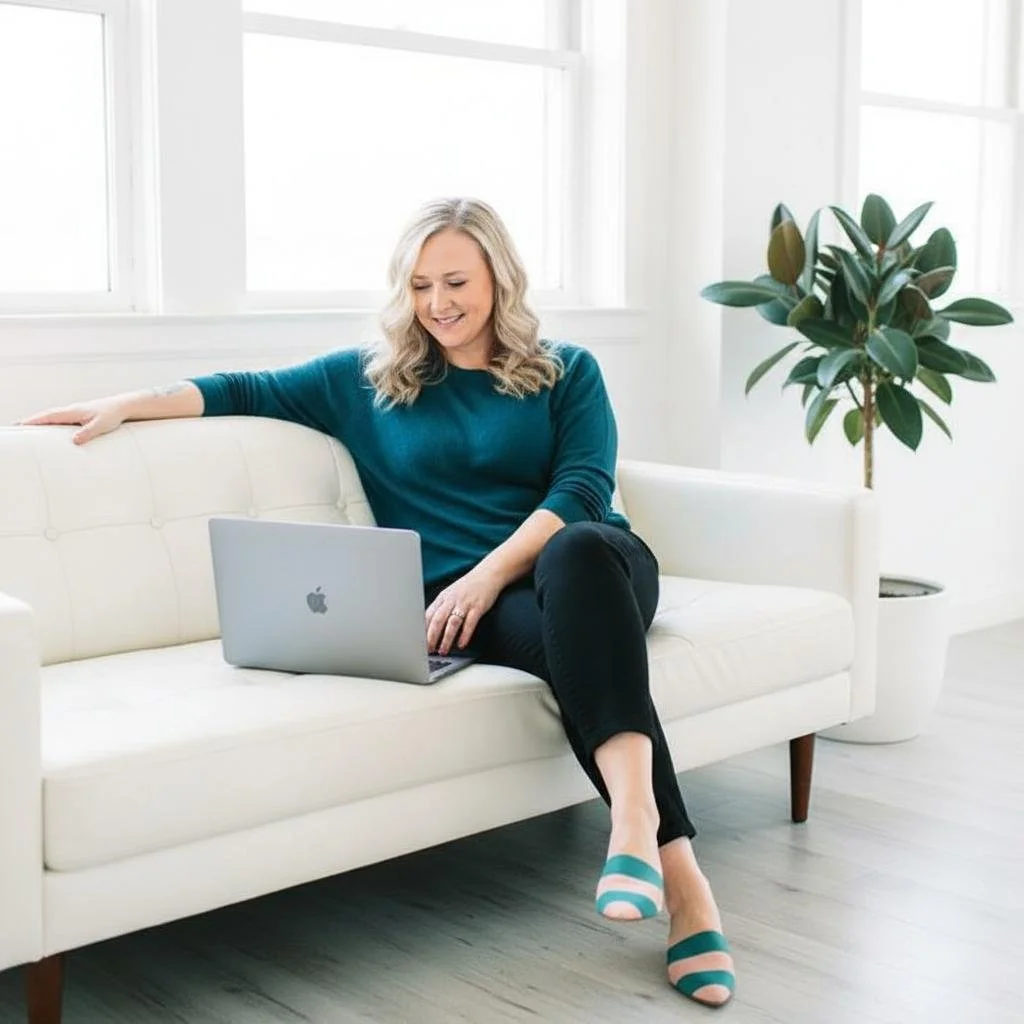Start the Relationship Before the First Session: How to Use Your Website to Build a Positive Therapeutic Connection
Start the Relationship Before the First Session: How to Use Your Website to Build a Positive Therapeutic Connection
Quick Answer for Skimmers (and Search Engines):
Your website can start the therapeutic relationship before the first session—by using intentional copy, welcoming design, and clear messaging that feels like a warm hello, not a sales pitch.
Why it matters:
People land on websites when they’re vulnerable and looking for safety. A thoughtful introduction, a glimpse of your approach, and easy next steps all help create connection, calm nerves, and make it easier for someone to reach out. In this post, I'll break down how to set the tone, share your story in a client-centered way, and invite visitors into a safe space—even before you meet.
When someone lands on your website, they’re not just looking for your credentials or scheduling information—they’re looking for a feeling. A felt sense of can I trust this person? Will I feel safe here? Will they get me?
In other words, the therapeutic relationship starts well before the first session.
Your website is your first chance to show clients who you are—not just as a professional, but as a person. And when done thoughtfully, it can begin to build the trust, safety, and connection that make therapy work.
Let’s talk about how.
What Makes a Strong Therapeutic Relationship?
Ask any therapist (or client) what really makes therapy effective, and the answer probably won’t be a specific modality. More often than not, it’s the relationship.
A strong therapeutic alliance includes:
Trust: Clients feel safe enough to open up and explore vulnerable parts of themselves.
Attunement: Clients feel seen, heard, and understood.
Clarity: Clients know what to expect and understand your role as a therapist.
Mutual respect: Clients feel cared for without being judged or pathologized.
In fact, research consistently shows that the quality of the therapeutic relationship is one of the biggest predictors of positive outcomes—often more important than the specific techniques or theories being used.
So, if relationship is at the core of therapy, it makes sense that your website should reflect that, too.
The Relationship Begins Before You Meet
When someone is thinking about starting therapy, they’re often already carrying anxiety, shame, grief, or overwhelm. They're scrolling through websites trying to figure out who might get them—who might feel like a good fit.
If your site feels cold, confusing, or overly clinical, it can inadvertently create distance. But if your site feels clear, grounded, and warm? You’re already laying the foundation for trust.
In fact, many clients are already forming a first impression of your relational style based on how your site makes them feel.
That’s powerful. And it means your website isn’t just a marketing tool—it’s part of the therapeutic process.
How to Build Connection Through Your Website
Here are five ways to begin the therapeutic relationship before the first session—even while keeping your site professional and conversion-focused.
1. Write in a Warm, Natural Tone
Your copy doesn’t have to sound like an academic paper or a therapy brochure. In fact, the more human your writing feels, the more likely a potential client is to connect with it.
That means:
Avoiding jargon or overused phrases
Writing like you talk in session
Speaking directly to the client’s lived experience
Let’s look at an example.
❌ Less effective (jargon-heavy + vague):
I provide a safe, nonjudgmental space for individuals to process their emotions and reach their goals. I meet you where you’re at and walk alongside you on your healing journey.
✅ More effective (clear + relatable):
You might be feeling totally overwhelmed—or unsure whether therapy will actually help. That’s okay. We’ll start where you are, and go at a pace that feels right for you. My job isn’t to fix you—it’s to really listen, offer perspective, and help you find your way forward.
See the difference? One sounds like a brochure. The other sounds like a human.
2. Show, Don’t Just Tell
It’s one thing to say “I’m warm and supportive.” It’s another to sound warm and supportive.
Rather than describing yourself with adjectives, let your tone and content speak for you. Use examples, metaphors, or small details that bring your approach to life.
Instead of:
“I offer personalized, empathetic care.”
Try:
“Some weeks, therapy might feel like a place to fall apart. Other weeks, it might be where you finally exhale. Either way, we’ll figure it out together.”
That’s the kind of language that resonates.
3. Let People Know What to Expect
Therapy can feel mysterious—especially for first-timers. A simple “What to Expect” section or a few lines on your homepage can go a long way in reducing anxiety and helping clients feel more at ease.
Consider including:
How to book a consult or first session
What happens in that first session
What your style is like (Are you active? Reflective? Do you give homework?)
How clients tend to feel after working with you
4. Use Design That Reflects Your Personality
Visuals matter—not because your site needs to look trendy or ultra-polished, but because design is one more way to express who you are.
Your fonts, colors, and images should support the kind of experience you want clients to have. Are you bold and direct? Gentle and grounding? A little playful?
Let the design reflect that. You don’t have to stick with sage green and stock photos of misty forests if that’s not your vibe.
5. Be Clear About Who You Work With
When clients feel seen, they’re more likely to reach out.
Being specific about who you work best with doesn’t alienate—it attracts the right people. And it makes clients feel like they’ve finally found someone who gets them.
Instead of:
“I work with adults navigating anxiety, depression, and life transitions.”
Try:
“I help women who feel like they have to be everything for everyone—but secretly feel lost, lonely, or burned out.”
That specificity builds rapport before you ever speak.
Connection Converts
When your website sounds like you—clear, kind, and grounded—it does more than just inform. It starts a relationship.
And that relationship is the foundation of good therapy.
So if you’re building a new site or updating your current one, don’t just focus on keywords and conversions (though those matter too). Focus on connection. On resonance. On writing and design that help your ideal clients breathe a little easier.
You can start small. Choose one paragraph to rewrite. Add a few lines to your homepage that sound more like you. Swap a stock photo for one that feels more authentic.
These small shifts can make a big impact.
Ready to Build a Website That Connects?
If you’re ready for a website that reflects the real you—the one your clients feel safe with—I’d love to help.
Check out the Template Shop for beautiful, conversion-focused therapist website templates you can customize with ease.
Or reach out about a Custom One-Day Website if you'd like to collaborate on something more tailored.
Your next client is looking for someone like you. Let’s help them find you—and feel the connection right away.
Pin it!
Some of My Favorite Private Practice Tools
Resources and Referral Links















































